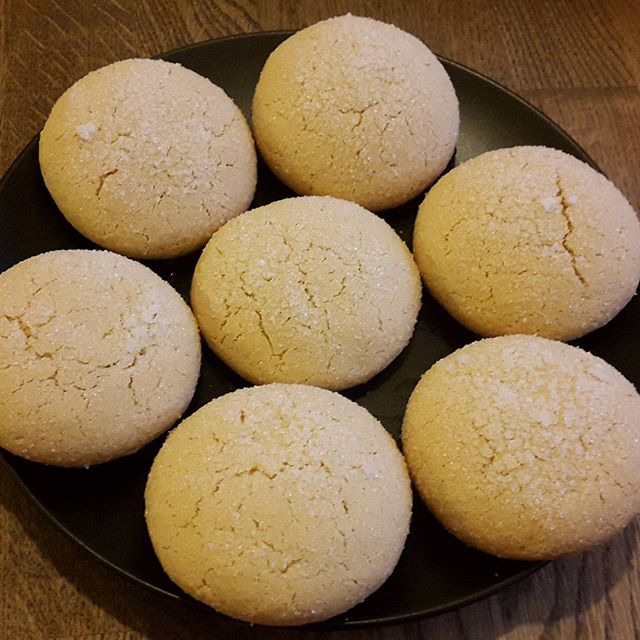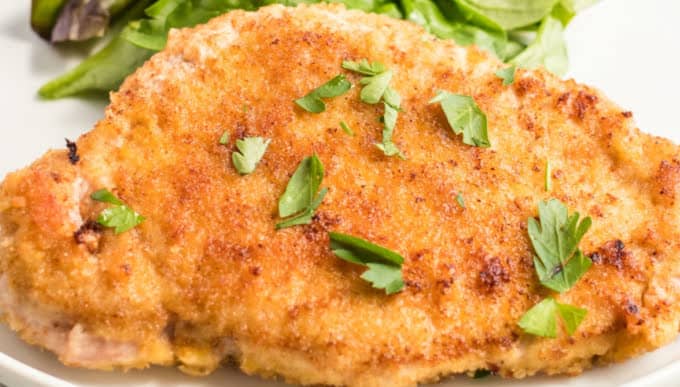INGREDIENTS
DONUTS:
- 7 cups (35 ounces) all-purpose flour (see updated note!)
- 3/4 cup (5.5 ounces) granulated sugar
- 1 1/2 teaspoons instant yeast (see note for active dry yeast)
- 2 cups cold milk (I use 2%)
- 2 large eggs
- 1 1/2 teaspoons salt
- 12 tablespoons butter, cut into tablespoon-size pieces and softened to room temp (I use salted)
- 2 to 3 quarts vegetable oil, for frying
GLAZE:
- 6 cups (24 ounces) powdered sugar
- 3/4 cup hot water (see note)
- 1/4 teaspoon vanilla extract
- Pinch salt
INSTRUCTIONS
- In the bowl of an electric stand mixer fitted with the dough hook, add the flour (see note!), sugar, yeast, milk, eggs and mix until combined. The dough will look a little shaggy, that's ok. Add the salt and continue mixing until well combined and the texture looks fairly smooth, 2-3 minutes. Let rest for 5 minutes.
- With the mixer running on medium low, add the butter a piece at a time until all the butter has been added and is incorporated into the dough. The dough will have softened considerably and may be sticking to the middle or sides of the bowl. Scrape down the middle and sides as needed.
- Knead the dough on medium speed for 10-12 minutes. Start the kneading time after the last of the butter has been added. The dough will be very sticky but as it kneads, it should come together better. Scrape down the sides of the bowl if needed.
- You'll know the dough is done mixing if you can pull up a handful and it stretches easily. It will be very soft. And it may even be sticking to the sides or middle a bit (depending on the mixer you have), but it shouldn't leave very much residue on your fingers when you pull a handful up. If it is wet and sticky, add 1/4 cup more flour and mix for a few more minutes (resist the urge to add this flour if at all possible unless your dough is a sticky mess).
- Transfer the dough to a greased container. Cover and refrigerate for at least 8 hours or up to 24 hours. The dough should double in the refrigerator. UPDATE: a lot of you have reported back that your dough didn't rise much in the refrigerator overnight, but the donuts still turned out amazing - so if your dough doesn't rise, don't give up. Also, place your container of dough on a middle rack where it might not be as cold.
- Immediately out of the refrigerator, roll the chilled dough on a lightly greased countertop to about 1/4-inch thick (or slightly thicker). It should be about a 12X16-inch rectangle. Line half sheet pans with parchment paper and lightly grease the parchment.
- Cut the donuts and donut holes with a 3-inch donut cutter (with a 1-inch center) and place them on the prepared pans. Cut any excess dough into donut holes. Reroll scraps, if desired (donuts will be bumpier and not quite as tender - it helps to let the combined rerolled scraps rest for 15-20 minutes before rerolling to relax the gluten so the dough doesn't spring back while rolling).
- Let the donuts rise, uncovered, until noticeably puffy. I warm my oven to 140 degrees. Turn it off and place the sheet pans of donuts inside to rise for 20 minutes or so. On the counter, it may take 1-2 hours for the donuts to rise.
- Place a double layer of paper towels on a half sheet pan.
- Heat oil in a heavy pot to at least 2-inches deep or in an electric deep fryer following the manufacturers directions to 350 degrees F (or 365 degrees for darker donuts).
- Gently pick up the puffy donuts so they don't stretch and quickly place them in the hot oil (the bottoms of the risen donuts will be very soft from rising on the greased parchment; the donuts fry best with less air bubbles if they are placed in the oil SOFT SIDE UP). Don't overcrowd the pot or the oil temperature will fall too quickly.
- Cook the donuts until golden brown on the bottom, about 1 to 1 1/2 minutes. Flip with tongs and continue cooking for another minute or so until golden. Lift the donuts out of the oil with the tongs, drain any excess oil, and transfer the cooked donuts to the paper towel lined baking sheet. (Donut holes should cook in about half the time)
- Let the oil come back to temperature before adding subsequent batches of donuts or donut holes.
- Prepare the glaze by whisking all the ingredients together until smooth. See the note below for thinning out the glaze. Place a wire cooling rack over a half sheet pan.
- Let the donuts cool until just warm to the touch before dipping fully in the glaze (if the donuts are too warm, the glaze will drip almost completely off). Place the glazed donuts on the wire rack so excess glaze can drip on the sheet pan below.
- For donut holes, I toss a couple dozen of them in the glaze at the same time, roll them around with my hands until evenly coated, and then transfer them to the wire rack.
- Once the glaze is set on the donuts, they can be transferred to a plate or other serving dish. The donuts are best served fresh but can be reheated the next day - a quick 12-15 second zap in the microwave has them tasting *mostly* fresh.
NOTES
Flour: many, many people have had amazing success with this recipe as-is, but it seems as though there have been issues with some people's dough in Kitchen Aid mixers turning out super dense. I'm honestly not sure why (could be due to so many different factors), but because I want everyone to have great success, my recommendations are a) measure the flour with a light hand; if you don't have a kitchen scale, fluff the flour very well, scoop in the cup and level with a knife - don't pack the flour into the measuring cup and b) if using a Kitchen Aid mixer, start with only 5 cups of flour. Add additional flour only if the dough is messy and sticky.
Small Batch Donuts: this recipe can easily be halved for a smaller batch. Rising and cooking times stay the same.
Whole Wheat: I have not tried this recipe with whole wheat flour or bread flour. The donuts will be lighter and fluffier with all-purpose flour.
Yeast: I have only ever used instant yeast in this recipe. It *should* convert ok to active dry yeast. My suggestion: proof 2 to 2 1/4 teaspoons active dry yeast in 1/4 cup warm water with a pinch of sugar until it is foamy and bubbling, 3-5 minutes. Add to the recipe with the milk (cut the amount of milk down by 1/4 cup).
Glaze: you can easily add more powdered sugar if you want the glaze thicker.
Rising: this dough really relies on the slow rise in the refrigerator - when I tried letting the donuts rise at room temp and baking them right away, they were dense and chewy.
Yield: the yield stated in this recipe is just approximate. You'll get more or less depending on the size of the cutter(s) you use, if you reroll scraps and cut out more donuts, etc.













0 Comments